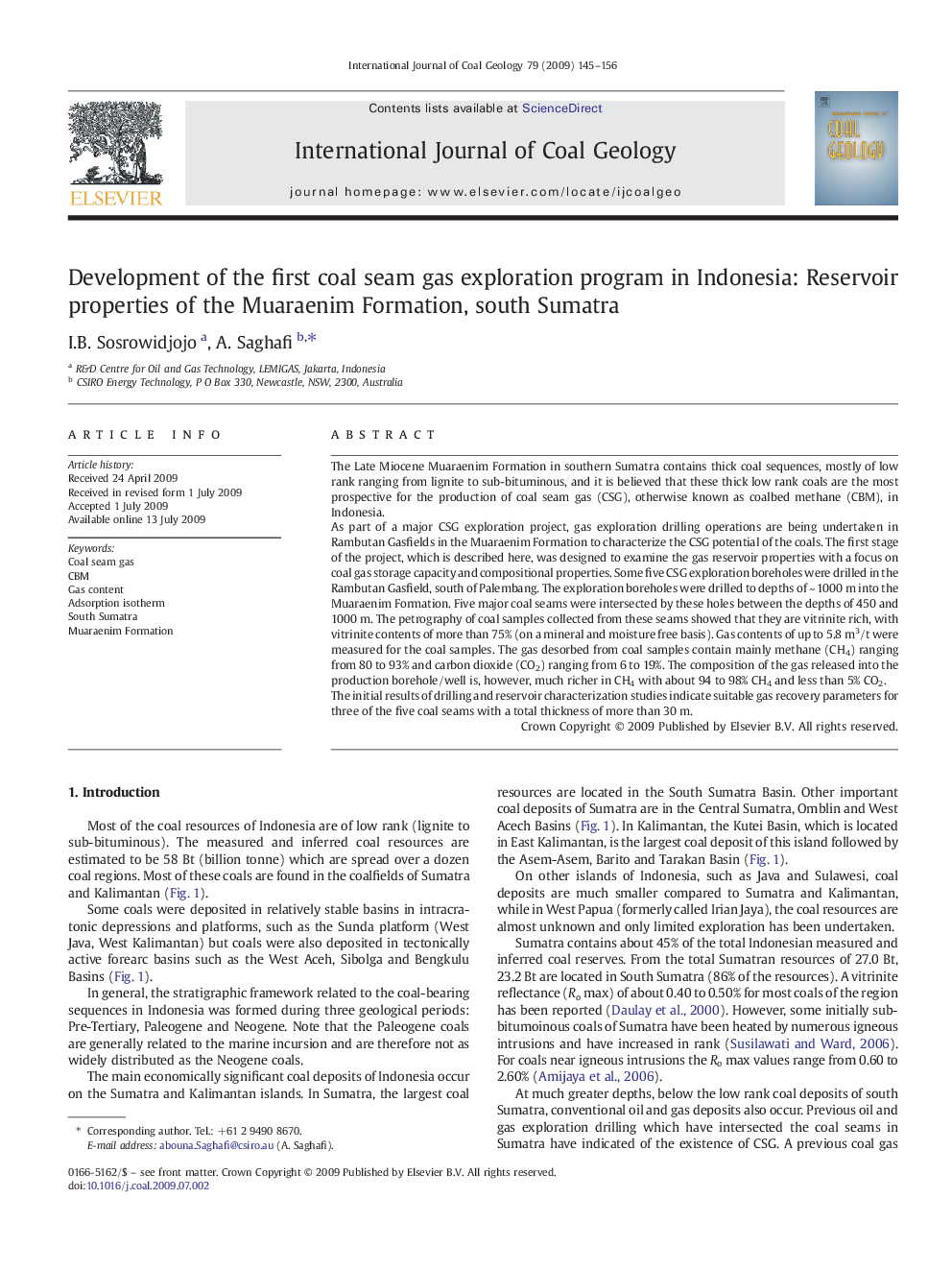| Article ID | Journal | Published Year | Pages | File Type |
|---|---|---|---|---|
| 1753912 | International Journal of Coal Geology | 2009 | 12 Pages |
The Late Miocene Muaraenim Formation in southern Sumatra contains thick coal sequences, mostly of low rank ranging from lignite to sub-bituminous, and it is believed that these thick low rank coals are the most prospective for the production of coal seam gas (CSG), otherwise known as coalbed methane (CBM), in Indonesia.As part of a major CSG exploration project, gas exploration drilling operations are being undertaken in Rambutan Gasfields in the Muaraenim Formation to characterize the CSG potential of the coals. The first stage of the project, which is described here, was designed to examine the gas reservoir properties with a focus on coal gas storage capacity and compositional properties. Some five CSG exploration boreholes were drilled in the Rambutan Gasfield, south of Palembang. The exploration boreholes were drilled to depths of ~ 1000 m into the Muaraenim Formation. Five major coal seams were intersected by these holes between the depths of 450 and 1000 m. The petrography of coal samples collected from these seams showed that they are vitrinite rich, with vitrinite contents of more than 75% (on a mineral and moisture free basis). Gas contents of up to 5.8 m3/t were measured for the coal samples. The gas desorbed from coal samples contain mainly methane (CH4) ranging from 80 to 93% and carbon dioxide (CO2) ranging from 6 to 19%. The composition of the gas released into the production borehole/well is, however, much richer in CH4 with about 94 to 98% CH4 and less than 5% CO2.The initial results of drilling and reservoir characterization studies indicate suitable gas recovery parameters for three of the five coal seams with a total thickness of more than 30 m.
